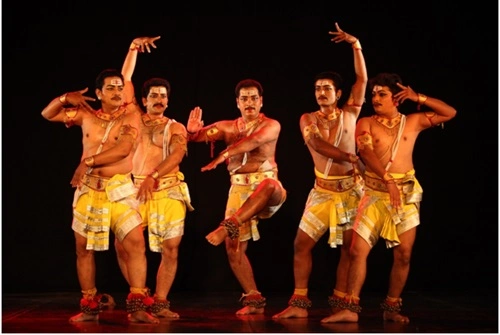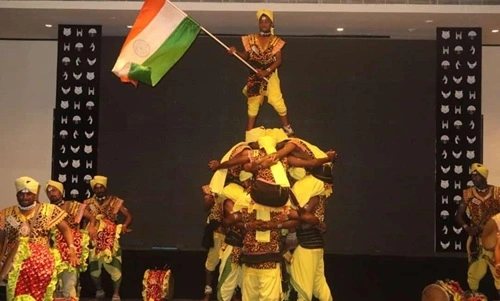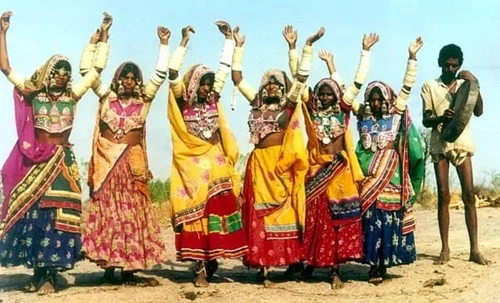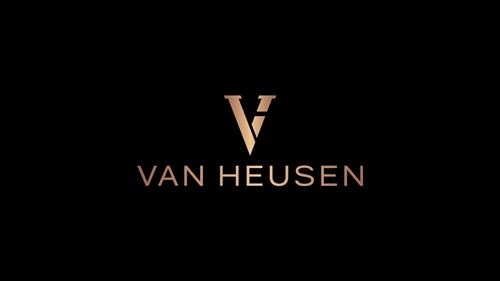Telangana, the youngest state of India, has a rich cultural heritage rooted in ancient traditions, folk arts, and classical influences. The state’s traditional dances play an integral role in festivals, religious celebrations, social gatherings, and storytelling. These dance forms are performed with enthusiasm and devotion, often accompanied by folk music, drums, and traditional instruments like dhol, tappeta, and ghatam.
From the graceful Perini Sivatandavam to the energetic Bonalu folk dances, Telangana’s dance traditions showcase the region’s deep connection to history, mythology, and rural life. Let’s explore the most prominent traditional dance forms of Telangana, their significance, and the occasions they are performed.
1. Perini Sivatandavam – The Warrior Dance of Telangana

One of the most famous and historically significant dance forms of Telangana, Perini Sivatandavam is a dynamic and masculine dance, performed in honor of Lord Shiva. It is believed to have been performed by Kakatiya warriors before going to battle.
- Features: Fast-paced movements, energetic footwork, and powerful expressions.
- Themes: Devotion to Lord Shiva, warrior spirit, and preparation for battle.
- Occasions: Religious festivals, cultural events, and temple rituals.
Revived in modern times by Padma Shri Dr. Nataraja Ramakrishna, Perini Sivatandavam is one of Telangana’s most prestigious dance forms, often performed at temple festivals and state celebrations.
2. Oggu Katha – The Narrative Folk Dance

Oggu Katha is a unique combination of storytelling, dance, and music, performed by Oggu priests, who narrate mythological tales and folk legends.
- Features: Dramatic storytelling, rhythmic footwork, and the use of traditional instruments.
- Themes: Hindu mythology, rural folklore, and devotion.
- Occasions: Temple festivals, village fairs, and religious events.
Performers use drums, harmoniums, and cymbals while dancing and singing, making Oggu Katha an engaging and interactive folk tradition.
3. Lambadi Dance – The Tribal Dance of Telangana

Performed by the Lambadi community (Banjaras or nomadic tribes), this colorful and rhythmic dance is one of Telangana’s most famous tribal dances.
- Features: Swirling movements, clapping, and vibrant costumes.
- Themes: Daily life, harvest, and joy.
- Occasions: Festivals, weddings, and harvest celebrations.
Dancers wear brightly embroidered skirts, heavy jewelry, and mirror-work blouses, reflecting their rich tribal heritage.
4. Bonalu Dance – The Festival Dance of Telangana
Bonalu, a major festival in Telangana, is celebrated with ritualistic dances performed by women carrying Bonam (pots filled with food offerings) on their heads.
- Features: Devotional steps, trance-like movements, and vibrant music.
- Themes: Worship of Goddess Mahakali, divine energy, and gratitude.
- Occasions: Bonalu festival (July-August).
This dance is accompanied by traditional drums and folk songs, making it an important part of Telangana’s religious traditions.
5. Gussadi Dance – The Tribal Warrior Dance
Gussadi dance is performed by the Gond tribal community, mainly in the Adilabad district of Telangana. It is a warrior-like dance, where men dress in elaborate feathered headgear and tribal attire.
- Features: Fast movements, warlike formations, and synchronized drumming.
- Themes: Strength, bravery, and tribal unity.
- Occasions: Dussehra festival and tribal celebrations.
Gussadi dancers wear animal skin and ornaments, creating a fierce and majestic visual effect.
6. Bathukamma Dance – The Floral Dance of Telangana
Bathukamma, Telangana’s state festival, is celebrated with a beautiful and traditional dance, where women form circles around floral arrangements (Bathukamma) and dance gracefully.
- Features: Circular formations, rhythmic hand movements, and folk singing.
- Themes: Celebration of nature, womanhood, and gratitude to Goddess Gauri.
- Occasions: Bathukamma festival (September-October).
This dance is performed by women dressed in traditional sarees, creating an aesthetic and spiritual experience.
7. Kolatam – The Stick Dance of Telangana
Kolatam, also known as the “stick dance,” is a group dance where performers rhythmically strike sticks together while dancing in a circle.
- Features: Fast-paced steps, coordinated stick beats, and vibrant music.
- Themes: Unity, celebration, and devotion.
- Occasions: Dussehra, Sankranti, and village fairs.
This dance is popular in rural Telangana, showcasing community bonding and traditional music.
8. Dhimsa – The Tribal Dance of Joy
Dhimsa dance is performed by the Adivasi tribes of Telangana, especially in hilly regions and rural areas. It is a joyful and energetic dance, symbolizing tribal unity and happiness.
- Features: Simple steps, synchronized movements, and folk drumming.
- Themes: Nature, tribal life, and community bonding.
- Occasions: Tribal festivals, harvest celebrations, and fairs.
Men and women dance together in colorful costumes, forming long human chains.
9. Dappu Dance – The Percussion Dance
Dappu dance is a traditional folk dance performed using Dappu (a type of hand drum). It is a high-energy performance, usually seen in festivals and public events.
- Features: Rhythmic drumming, acrobatic movements, and vibrant footwork.
- Themes: Joy, festival celebrations, and storytelling.
- Occasions: State festivals, weddings, and village fairs.
Dappu dance is an integral part of Telangana’s street performances, showcasing the region’s folk music and artistic talent.
10. Cherial Scroll Painting Dance – The Artistic Dance Form
Inspired by Cherial scroll painting, a traditional art form of Telangana, this dance represents mythological stories through painted backdrops and expressive movements.
- Features: Dramatic storytelling, traditional attire, and folk songs.
- Themes: Hindu mythology, social messages, and cultural history.
- Occasions: Religious festivals and cultural programs.
This dance is a fusion of art and movement, bringing ancient traditions to life through performance.
Conclusion
Telangana’s traditional dances are a blend of history, spirituality, tribal heritage, and community celebrations. Each dance, whether it is the warrior-like Perini Sivatandavam, the floral Bathukamma, or the energetic Dappu, holds a unique place in the cultural landscape of Telangana.
These dances are not just artistic expressions but also a way of preserving history, mythology, and community values. As Telangana continues to modernize and evolve, its folk dances remain an essential part of the state’s identity, celebrated at festivals, temple events, and cultural performances worldwide.
With their vibrant energy, deep-rooted traditions, and artistic excellence, Telangana’s folk dances continue to captivate and inspire generations, keeping the spirit of Telugu culture alive.

